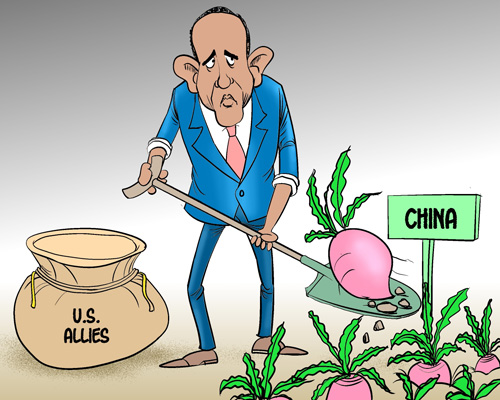Obstructions to US return to Asia-Pacific
 0 Comment(s)
0 Comment(s) Print
Print E-mail People's Daily, December 10, 2012
E-mail People's Daily, December 10, 2012
"Returning to Asia-Pacific" is a significant adjustment of U.S. diplomatic strategy made in recent years and has triggered a complex reaction among Southeast Asian countries.
|
|
|
Digging in the wrong garden [By Jiao Haiyang/China.org.cn] |
Simon Tay, chairman of the Singapore Institute of International Affairs: Due to financial issues, the United States is unable to support its strategy of returning to Asia-Pacific. The Asian region generally holds an anxious attitude toward the continued weakness of U.S. economy.
Even if the United States is able to avoid the current crisis of "fiscal cliff", the huge debts will cast a shadow on continued strong economic recovery. In addition, the efforts made by the United States to reenergize the economy may have a negative impact on other countries.
The United States is encouraged to more actively participate in Asian development to benefit every Asian country, rather than only represent the interests of the Americans. The Southeast-Asian countries hope that U.S. returning to Asia-Pacific will bring a win-win situation in economy. The economic sphere is different from political sphere, so the win-win situation is achievable.
Chen Gang, a research fellow at the East Asian Institute of the National University of Singapore: Currently, the U.S. government has quite limited energy and ability and is contained by a number of domestic political and economic problems, so its strategy of returning to Asia-Pacific is just a “show” in the short run.
Thitinan Pongsudhirak, Thai political scientist, speaker and Professor at Chulalongkorn University in Bangkok: The credibility of U.S. strategy of returning to Asia-Pacific is doubtful due to its financial restrictions. Moreover, it is also debatable that to what extent the United States can realize the policy when it has been trapped in the quagmire of the Middle East situation for a long time and consumed considerable energy and resources.







Go to Forum >>0 Comment(s)